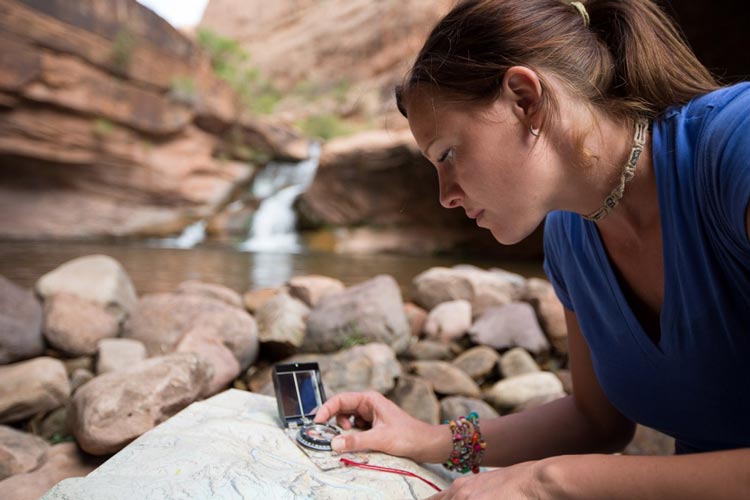How to Read a Compass
The compass is one of the most crucial pieces of equipment for any navigator. With a compass, you are able to orient the map, orient yourself to the map, identify landmarks, and find your position. A reliable compass is also a valuable piece of emergency survival equipment for the hiker or camper, as electronic compasses (like you'll find on a GPS system or a smartphone) are dependent upon the electricity that powers them. As useful as a compass may be though, having one won't do you much good unless you know how to use it.
KNOWING THE PARTS OF A COMPASS
Though orienteering compasses run the gamut from military grade designs to just steps away from children's trinkets, nearly all share a few vital similarities that help you to figure out where you're going. What's known as the 'housing' encases the moving parts - most importantly, the needle. The needle will usually have a red end or a more ornate design, and it is this end that will point to magnetic north (more on that later). The housing will usually sit on a rectangular base plate, on which will be marked scales in both metric and standard units for taking accurate distance measurements on maps, and a 'direction of travel arrow' to aid in orienting yourself. For reading a compass, it's helpful to think in terms of degrees (north being 0 or 360 degrees, and south being 180 degrees) rather than cardinal directions, as those terms don't allow you to be quite specific enough.
USING YOUR COMPASS TO FIND NORTH
The first thing you'll need to know is how to find north. The earth's naturally occurring magnetic field causes the north and south poles to have opposing charges, allowing the magnetized needle to point the direction of magnetic north. It's important to remember that magnetic north is not the same as true north, which would point toward the Earth's exact rotational axis. The difference in degrees between the two directions is know as declination. (While determining declination is a skill any seasoned navigator must possess, we'll leave that until you acquaint yourself with the basics.) Any USGS map will note the declination in the top, and you'll simply need to adjust all readings by the number of degrees specified.
When you are ready to use your compass to take a reading, make sure you're clear of metal structures and and power lines or anything else that could influence magnetism and prevent your compass from working properly. Even small objects like batteries, watches, flashlights, and pocket knives can influence your needle if close enough.
And finally, we're ready to take a reading. Hold the compass as level as you can in your palm, elbow resting on your torso and bent to a 90 degree angle. Make sure that the needle is able to move freely (i.e., not touching the housing). Turn the compass dial so that the orienteering arrow points toward the north the needle has established. From this reading, you can establish any direction you need.
This skill is the basis of navigation, and will be your first step on the path to becoming a master navigator.